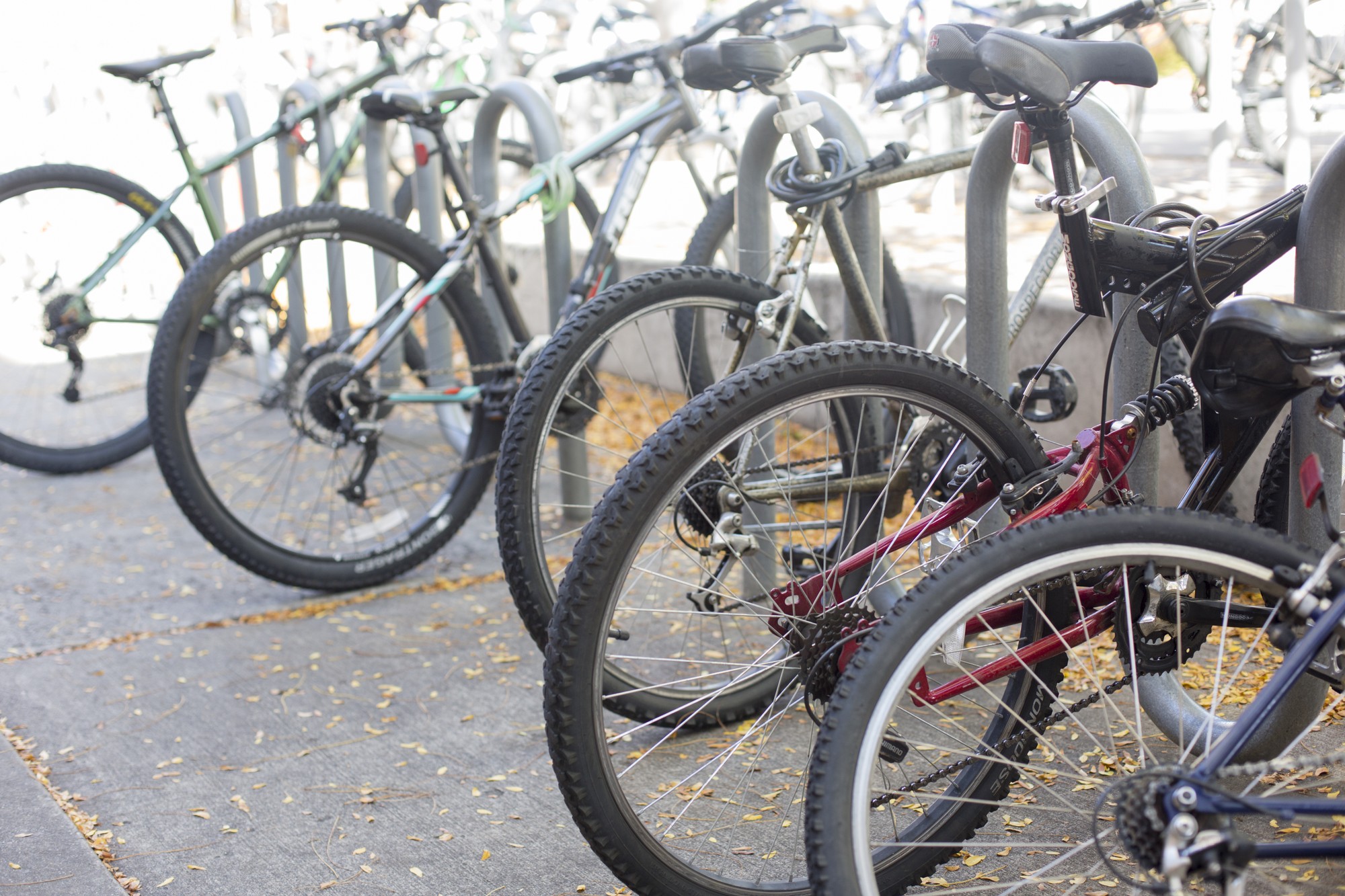Logan to adapt for cyclist safety
The approval of a bicycle and pedestrian master plan by the Logan City Council was met with a standing ovation from helmeted bicycle on Oct. 6.
“This was needed in this city because we have really wide streets and we are looking to diversify the transportation options within the valley,” said Stephanie Tomlin, the program coordinator for Aggie Blue Bikes at Utah State University.
The plan should make cycling and walking safer and more readily available to Logan residents by establishing bike lanes and safer pedestrian accessibility throughout the city.
As winners of the National Bike Challenge, which took place from June to September, USU students and faculty could benefit from the new plan. The challenge encouraged people form across the country to track their cycling miles.
During the challenge, USU students, staff and faculty rode a total of 76,148 miles. They saved an estimated 28,604 pounds of CO2 and saved a total of $17,957.
Among Utah State’s cycling community, Steve Simms, an archaeology professor, was the first place male rider. The male runner-up was Jeff Horsburgh, a civil and environmental engineering professor. The top female ride was Kristine Miller, from the English department. The female runner-up was Peg Arnold from Utah Public Radio.
As of the month of October, USU is still beating the rest of the universities throughout the nation, even though the competition is officially over. To date, Aggie cyclists biked 188,277 miles between 221 registered riders.
Shane Graham, an English professor, is currently in first place with 473 points and Cheryl Adams, a Merrill-Cazier Library faculty member, is at the top of the women leader board with 395 points for the month of October. The Merrill-Cazier Library team is winning the departmental contest with 975 points.
With more than two times the amount of pedestrians and five times the amount of cyclists compared with state averages, Logan could benefit from the plan.
But some cycling enthusiasts at USU are uncertain of the new plan.
Nick Gittins, a senior studying history, got rid of his car years ago and bikes as his main mode of transportation. He said he is skeptical about the plan, because Logan doesn’t always follow through with its commitments, especially if the plan is going to take 10 years to implement.
“Then they paint bike lanes in the middle of driving lanes in the middle of the road in some places, so their idea of biker safety is lacking,” he said.
Regardless of the poor implementation, Gittins said Logan needs the comprehensive plan, because he said he is concerned about the air quality during the winter.
“Sure it is cold, but it is not that bad,” he said. “The worst part of it is how disgusting the air quality is outside.”
Russ Holley, the senior planner for Logan, said the city had a general plan in 1990 plan and another in 2011, but it they were both too vague.
He said one of the many reasons Logan adopted the current plan was to improve cyclist safety.
“Sixty percent of Americans are interested in walking and biking more, but they are concerned about their safety,” he said.
Holley said Cache Valley’s poor air quality was another reason the plan was approved.
“If we get people out of their automobiles, we can reduce the amount of pollution,” he said.
Air quality was not the only health concern, said Holley. They wanted to support a healthier Logan, Holley said.
“As Americans we are slowly becoming more obese, and lack of exercise is one of the higher reasons,” he said. “If you can ride your bike to work, it is better than riding in your car.”
— morgan.pratt.robinson@gmail.com or @morganprobinson

